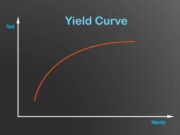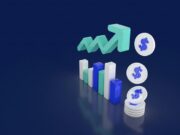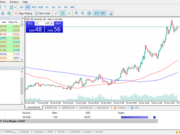Definition
A raw material, also known as a feedstock or most correctly unprocessed material, is a basic material that is used to produce goods, finished products, energy, or intermediate materials which are feedstock for future finished products. As feedstock, the term connotes these materials are bottleneck assets and are highly important with regard to producing other products. An example of this is crude oil, which is a raw material and a feedstock used in the production of industrial chemicals, fuels, plastics, and pharmaceutical goods; lumber is a raw material used to produce a variety of products including all types of furniture. Metallic raw material production follows the processes such as crushing, roasting, magnetic separation, flotation, and leaching, smelting and alloying.
Raw Materials
What are ‘Raw Materials’
Raw materials are materials or substances used in the primary production or manufacturing of goods. Raw materials are often referred to as commodities, which are bought and sold on commodities exchanges around the world. Raw materials are sold in what is called the factor market, because raw materials are factors of production along with labor and capital.
Explaining ‘Raw Materials’
Raw materials are accounted for in an intermediate inventory account used by manufacturing companies. As raw materials are used, raw materials inventory is decreased, while work-in-progress accounts are increased. When the work-in-process items are completed, they are transferred to finished goods, and are accounted for as cost of goods sold upon sale.
Direct vs. Indirect Raw Materials
Raw materials may be divided into two major classifications: direct and indirect. Direct raw materials are materials that can be directly traced to the finished product. For example, lumber may be directly traced to a completed chair, so in this situation, lumber is a direct expense.
Fixed vs. Variable Costs
Another major classification that can be used to describe raw materials is “fixed or variable costs.” Fixed costs relate to charges that do not vary based on inputs or production levels. Variable costs relate to charges that fluctuate based on the quantity being produced. For this reason, raw materials are typically variable manufacturing costs because they are only purchased during the production of a good. If no good is being produced, the cost is not incurred, and because it can be avoided by reducing production, raw materials are a variable cost.
Direct Raw Materials Budget
A manufacturing entity calculates the amount of direct raw materials needed for specific periods, to ensure shortages do not occur. Also, with the specific amount of direct raw materials, an entity has the ability to reduce inventory stock and security, lower ordering costs, and reduce the risk of material obsolescence. The direct raw materials budget is calculated by adding the raw materials required for production to the anticipated or desired ending balance of direct raw materials. This summation is reduced by the amount of direct raw materials on hand at the beginning of the period. The final figure is the total direct raw materials that need to be purchased.
Further Reading
- Financial investors in international raw materials and food markets and price movements of those commodities – search.proquest.com [PDF]
- Impact of small and medium enterprises on economic growth and development – worldscholars.org [PDF]
- Raw-material-intensive Economy and Development of Small and Medium-sized Enterprises in Kazakhstan – search.proquest.com [PDF]
- Hierarchical structure in financial markets – link.springer.com [PDF]
- The problem of financing of economic development – www.jstor.org [PDF]
- Critical raw materials: A perspective from the materials science community – www.sciencedirect.com [PDF]
- An economic analysis of the financial viability of switchgrass as a raw material for pulp production in eastern Ontario – www.sciencedirect.com [PDF]
- Solubility and dissolution properties of generic rifampicin raw materials – www.tandfonline.com [PDF]
- Limits to the critical raw materials approach – www.icevirtuallibrary.com [PDF]


































